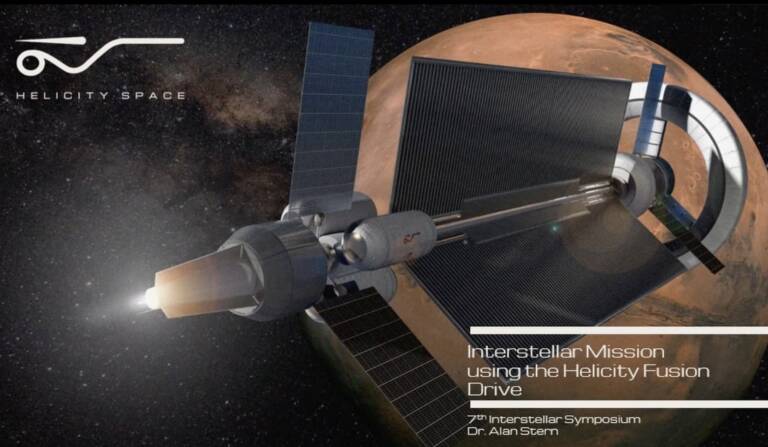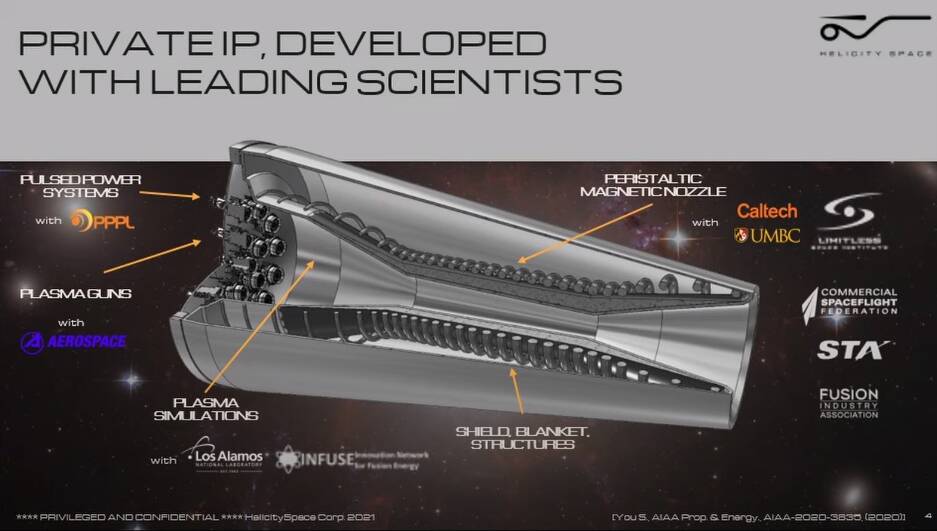Construction of the first phase of the nuclear fusion space engine financed

Helicity Space has closed a $5 million funding round to accelerate the development of technology that could finally unlock fast, efficient travel into deep space.
This technology is fusion propulsion, which has long been the domain of science fiction. The startup claims to have discovered a way to use plasma jets for the fusion reaction. The project is the brainchild of plasma physicist and Helicity co-founder Setthivoine You; He and two other cofounders, CEO and former banker Stephane Lintner and former Boeing-Rocketdyne executive Marta Calvo, made the company official in 2018.
Helicity spent several years in a state of secrecy, “dotting the i's in terms of what we could do,” Lintner explained in a recent interview. “Fusion is a contaminated field and we needed to make sure we were ready before raising venture capital.”
The Pasadena company has managed to attract financing from a notable group: Airbus Ventures, the VC arm of the European aerospace giant, TRE Advisors, Voyager Space Holdings, which is behind the Starlab commercial space station, the space company E2MC Space , Urania Ventures and Gaingels.
Helicity's key differentiator, according to Lintner, is that it focuses on fusion propulsion, rather than fusion for land applications. “ Everything we do is about pushing a spaceship and not about generating sustainable electricity,” he explained. In some ways, the first problem is simpler than the second: space is a beautiful vacuum, and that's exactly the environment that plasma jets require. Electricity will be a byproduct of fusion, not its goal.
“Our concept is uniquely adapted to be useful first and foremost in space,” he said. “With time […] our things could turn into reactors on Earth too, but by then others will probably have already solved the problem. It is not our primary objective."
The startup's technology is based on a method called magneto-inertial fusion, which compresses stable plasma jets with a magnetic nozzle. The plasma is heated to hundreds of millions of degrees by pulsating, alternating fusion and generates a fusion reaction that pushes the spacecraft forward.
The startup plans to use the funding to produce a fusion thruster prototype that demonstrates the fundamental technology on a small scale. On a longer scale, Helicity aims to make a full prototype flying in space in about 10 years.
Lintner was clear that there is still much to de-risk and much to learn about the emerging fusion engine market. The development phase is very initial, but the creation of the technological demonstrator will make it possible to raise funds for the first complete engine prototype. Furthermore, in theory, the nuclear fusion engine is much safer than the fission engine because it does not need to send dangerous radioactive isotopes into space.

Thanks to our Telegram channel you can stay updated on the publication of new Economic Scenarios articles.
The article Construction of the first phase of the nuclear fusion space engine financed comes from Economic Scenarios .
This is a machine translation of a post published on Scenari Economici at the URL https://scenarieconomici.it/motore-a-fusione-nucleare/ on Mon, 08 Jan 2024 08:00:52 +0000.

